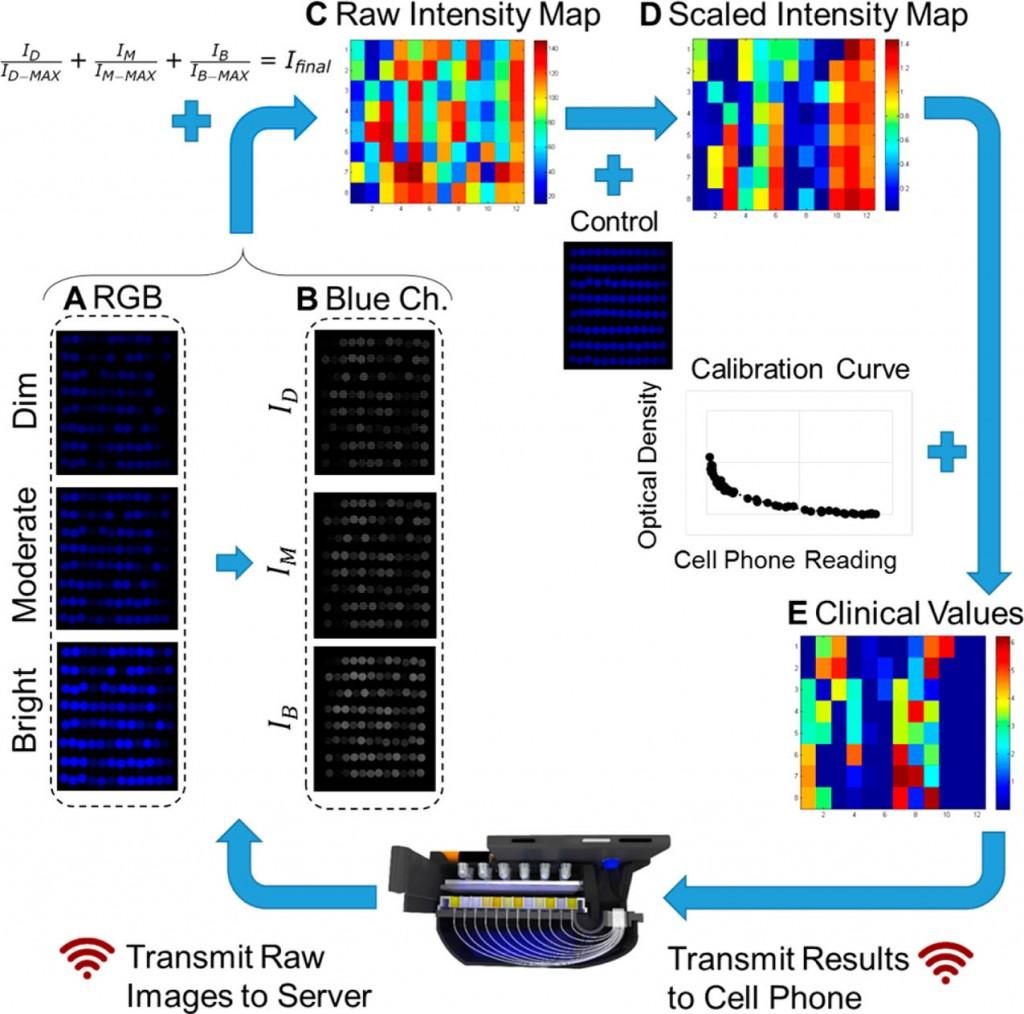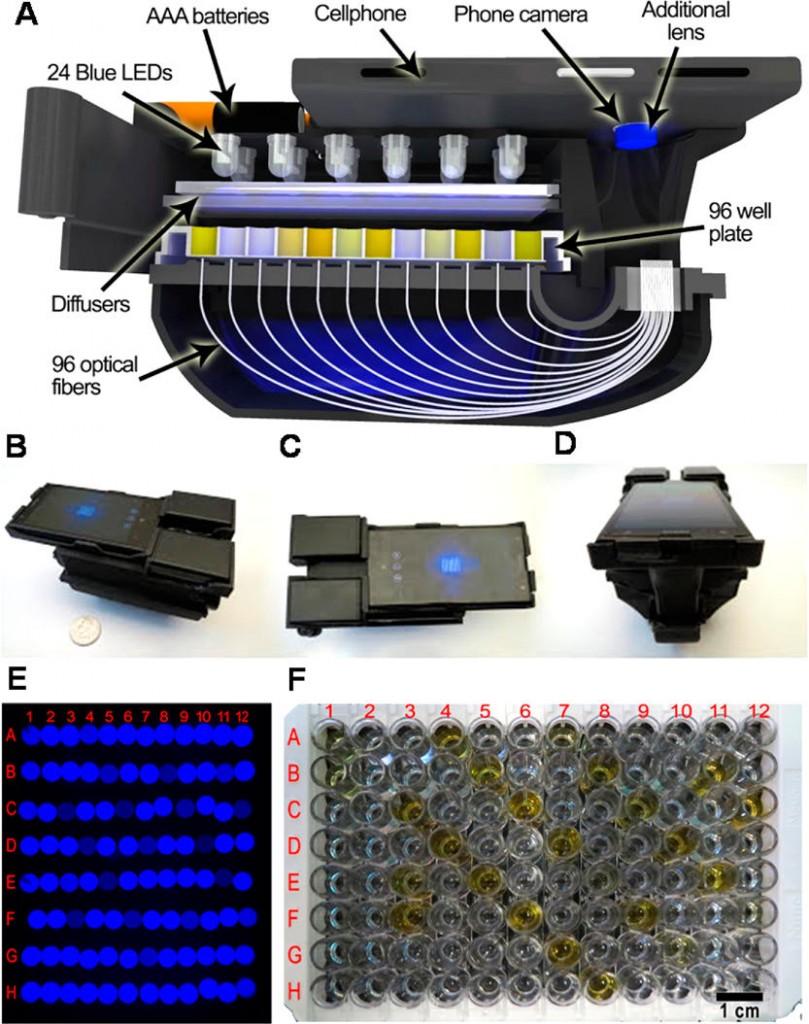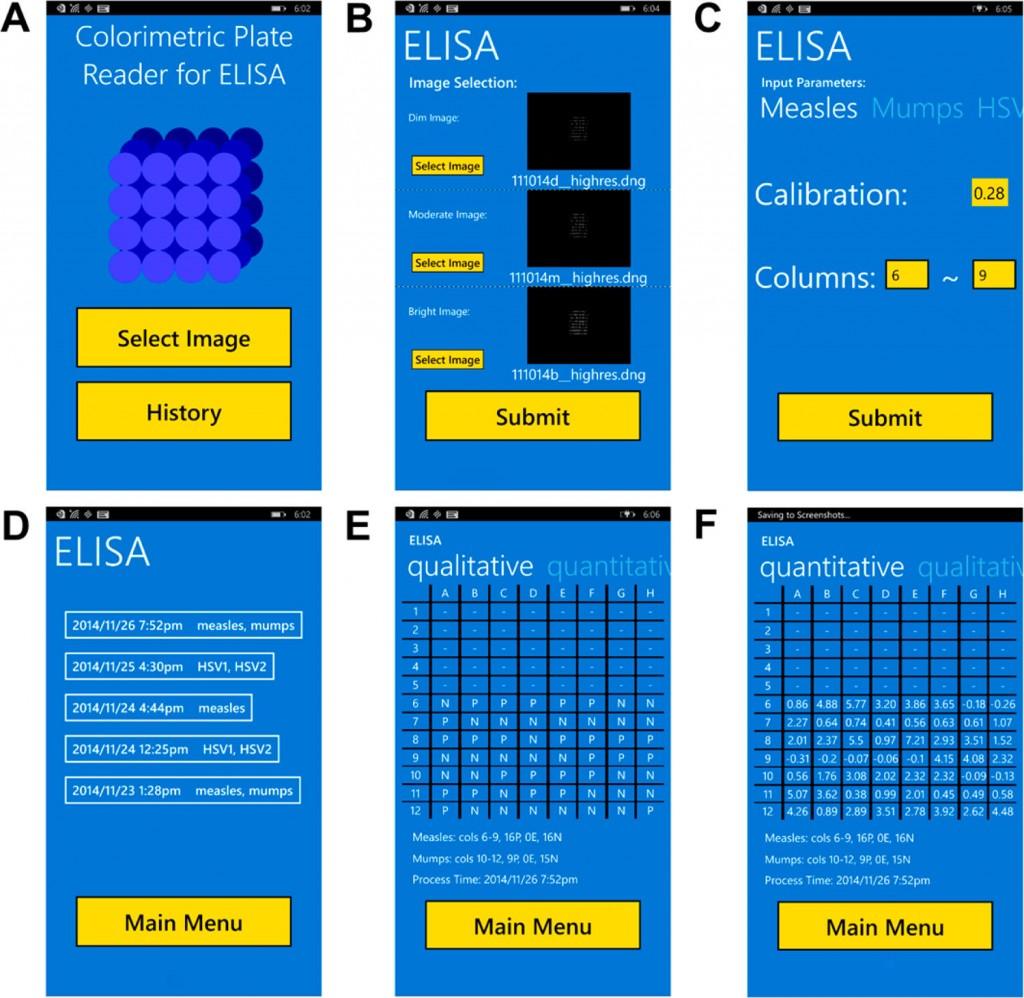3D Printed Device Allows Smartphones to Detect Viruses Such as HIV, West Nile & More Within ELISA Plates
 When it comes to diagnosing viruses and bacteria such as hepatitis, West Nile, HIV, herpes, measles and mumps, the developed world is quite efficient at doing so. Typically tests can be done in a matter of days, simply by drawing blood and using large pieces of equipment to test for specific antigens. In the US and much of Europe, a diagnostic tool called enzyme-linked immunosorbent assay (ELISA) is used with great results. However, current ELISA machines are very large, and they are typically reserved for large clinical laboratories.
When it comes to diagnosing viruses and bacteria such as hepatitis, West Nile, HIV, herpes, measles and mumps, the developed world is quite efficient at doing so. Typically tests can be done in a matter of days, simply by drawing blood and using large pieces of equipment to test for specific antigens. In the US and much of Europe, a diagnostic tool called enzyme-linked immunosorbent assay (ELISA) is used with great results. However, current ELISA machines are very large, and they are typically reserved for large clinical laboratories.
What happens though, when individuals need to be tested in the field, or in countries that don’t have the financial means nor available space to harbor a large ELISA machine? Up until now, there has been no clear cut answer. However, researchers at the California NanoSystems Institute of UCLA have developed a new 3D printed mobile phone-based device that can read the same ELISA trays that typically require the aforementioned large, expensive machinery.
In a report titled, “Cellphone-Based Hand-Held Microplate Reader for Point-of-Care Testing of Enzyme-Linked Immunosorbent Assays”, researchers led by Aydogan Ozcan, associate director of the California NanoSystems Institute, alongside Dino Di Carlo, professor of bioengineering, and Omai Garner, associate director of clinical microbiology for the UCLA Health System, outlined a new device that works quite well, with remarkable accuracy.
“Standard microplate based enzyme-linked immunosorbent assays (ELISA) are widely utilized for various nanomedicine, molecular sensing, and disease screening applications, and this multiwell plate batched analysis dramatically reduces diagnosis costs per patient compared to nonbatched or nonstandard tests,” the researchers point out. “However, their use in resource-limited and field settings is inhibited by the necessity for relatively large and expensive readout instruments. To mitigate this problem, we created a hand-held and cost-effective cellphone-based colorimetric microplate reader, which uses a 3D-printed optomechanical attachment to hold and illuminate a 96-well plate using a light-emitting-diode (LED) array.”
The device is made up of a Windows based Nokia Lumia 1020 smartphone, which has been paired with a 3D printed attachment, which is connected via the cloud to UCLA servers. It illuminates the ELISA plates with an array of diodes. As the light is projected through each of the 96 fluid-containing wells in the plates, optical fibers collect data which is then transmitted through a custom built app to the servers. Then, using a special learning algorithm, it detects each well on the image that it receives, and then proceeds to calculate the average, standard deviation, maximum, minimum and max-min difference, in order to determine the results and provide them to a medical professional.
“We successfully tested this mobile platform in a clinical microbiology laboratory using FDA-approved mumps IgG, measles IgG, and herpes simplex virus IgG (HSV-1 and HSV-2) ELISA tests using a total of 567 and 571 patient samples for training and blind testing, respectively, and achieved an accuracy of 99.6%, 98.6%, 99.4%, and 99.4% for mumps, measles, HSV-1, and HSV-2 tests, respectively,” the researchers write. “This cost-effective and hand-held platform could assist health-care professionals to perform high-throughput disease screening or tracking of vaccination campaigns at the point-of-care, even in resource-poor and field-settings.”
Quite staggering results for a device that seems quite simple. It’s really the programming that went into creating such a comprehensive algorithm, which makes the device function so reliably. This could be considered a major breakthrough in allowing field workers to gather samples from patients and then diagnose them on the spot, via a mobile app. The goal of the research team is to bring reliable diagnostic tools to disadvantaged and rural-areas around the world.
“We are always looking toward the next innovation, and are looking to adapt the basic design of this ELISA cell-phone reader to create smartphone-based quantified readers for other important medical tests,” Di Carlo explained.
It should interesting to follow the development and see how quickly a product like this comes to market. It could go a long way in preventing the spread of disease in third world countries, areas of natural disasters, and in war torn nations.
What do you think about this clever device? Discuss in the 3D Printed Smartphone ELISA Device forum thread on 3DPB.com.
Subscribe to Our Email Newsletter
Stay up-to-date on all the latest news from the 3D printing industry and receive information and offers from third party vendors.
You May Also Like
3D Printing Unpeeled: New Arkema Material for HP, Saddle and Macro MEMS
A new Arkema material for MJF is said to reduce costs per part by up to 25% and have an 85% reusability ratio. HP 3D HR PA 12 S has been...
3D Printing News Briefs, January 20, 2024: FDM, LPBF, Underwater 3D Printer, Racing, & More
We’re starting off with a process certification in today’s 3D Printing News Briefs, and then moving on to research about solute trapping, laser powder bed fusion, and then moving on...
3D Printing Webinar and Event Roundup: December 3, 2023
We’ve got plenty of events and webinars coming up for you this week! Quickparts is having a Manufacturing Roadshow, America Makes is holding a Member Town Hall, Stratafest makes two...
Formnext 2023 Day Three: Slam Dunk
I’m high—high on trade show. I’ve met numerous new faces and reconnected with old friends, creating an absolutely wonderful atmosphere. The excitement is palpable over several emerging developments. The high...


































